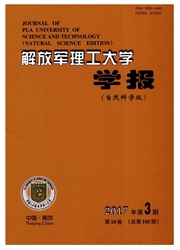

 中文摘要:
中文摘要:
利用离子和电子动量方程、连续性方程以及电流连续性方程建立了适合描述中低纬spread-F发展的物理模型,并对模型进行了数值求解,讨论了利用H2O释放来激发电离层Rayleigh-Taylor不稳定性的可能性.结果表明,电离层处于不稳定状态时,H2O在电离层底部释放后,造成电子的大量消耗,增强了峰值高度以下电子的密度梯度,有利于spread-F的发展,在spread-F发展的过程中,释放中心附近会形成电子密度的消耗区,两侧出现密度的增强区;而电离层比较稳定时,初始扰动会逐渐稳定下来,但化学物质释放仍能造成电子较长时间、较大范围的扰动.
 英文摘要:
英文摘要:
A physical model for the development of the lower and mid-latitudes spread-F is developed including the equations for density,momentum,and current continuity.Using numerical simulation techniques,we present the nonlinear evolution of lower and mid-latitudes spread-F bubble after chemical H2O release at bottomside ionosphere and discuss the possibility of the initiation of the Rayleigh-Taylor instability of the ionosphere.The results show that H2O can produce localized electron density depletions in F region,forming ionospheric "hole",and makes the altitude gradient of electron density much steeper.It may initiate ionospheric instability,generating spread-F or irregularities of various scales when the ionosphere is unstable.The depletion area is formed near the disturbance center and the enhancement areas are evolved at both sides after the development of spread-F in low and mid-latitudes.The disturbance tends to be stabilized when the ionosphere is more stable,but chemical release can still cause longer and wider electron disturbance.
 同期刊论文项目
同期刊论文项目
 同项目期刊论文
同项目期刊论文
 期刊信息
期刊信息
